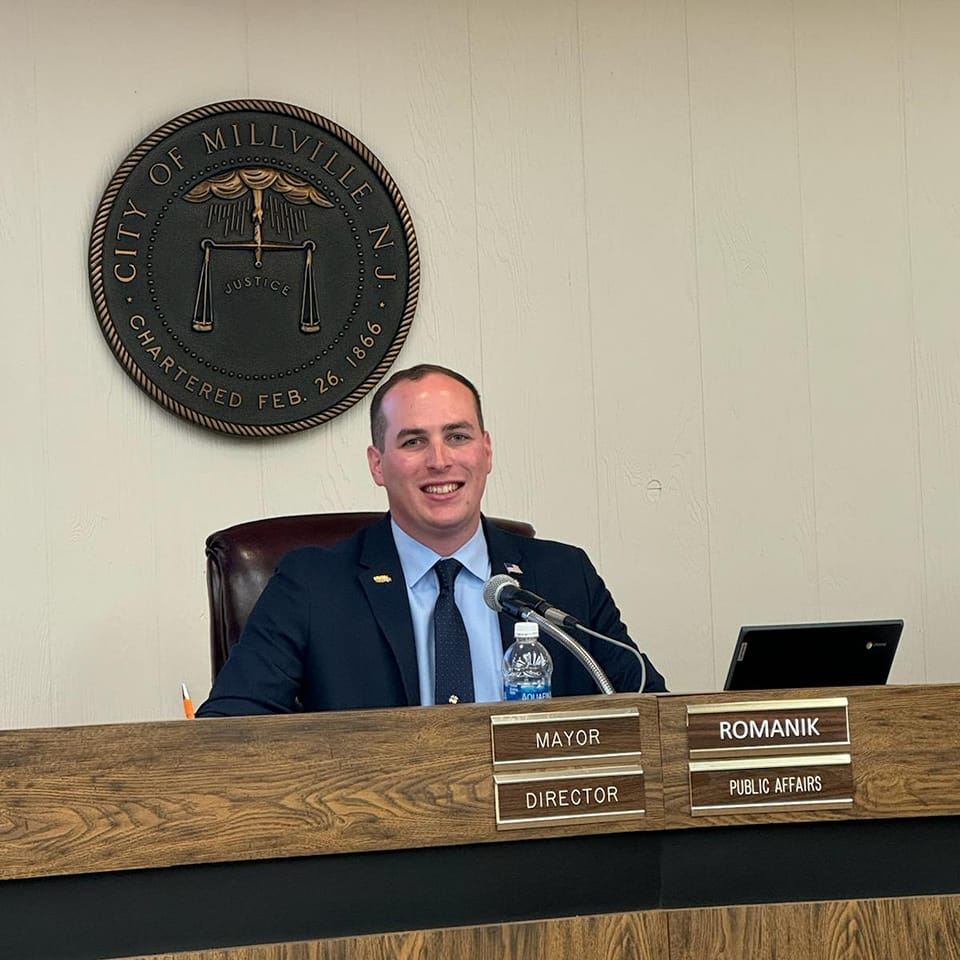Suggested Use of Candidate Pages & Project Disclaimer
Note: There are a few ways to use this page. It mixes objective source material with light analysis and first-hand reporting so voters can choose their depth.
How to get the most out of this candidate page
- Start with the Quick Summary. Click the Quick Summary button underneath the websites section. It gives you the fast take: what we know from sources + brief analysis from a “data collector / local reporter” point of view.
- Scan the objective sources. If you want more data, jump into the source material we’ve collected:
- Official campaign website (if available)
- Social media pages and posts (if available)
- Interviews (video/audio) and transcripts (if available)
- Check the agenda & positions. Look for the candidate’s stated agenda and issue stances. We try to group them plainly so you can compare across candidates quickly.
- Read the Transparency/Accessibility rating. For a deeper look at how transparent the candidate has been (web presence, interviews, follow-ups, meet n greets) and how communicative they've been in response to outreach, see the rating and its short explanation. This helps you understand what’s easy to find and who is easy to contact.
- Use the page as a multi-layered hub. If you 'just want the facts', stick to the source documents. If you want opinions about transparency, accessibility, and communication, check the transparency meter. If you want coverage somewhere in between, like interviews that range from introductory to moderately pressing, watch the interviews. Choose your own adventure.
Where we add context or opinion, it’s to help busy voters make sense of gaps in local information. Not everyone has time to be a volunteer politico.
Benjamin Romanik
Videos
Mayor Romanik on Millville’s Government Structure, Development, and Safety during Campaign Season
📋 Click here for full interview summary 📋
A structured recap of Steven Solof’s interview with Mayor Ben Romanik, who is seeking re-election. The conversation focuses on Millville’s Walsh Act government structure and communication breakdowns at City Hall, then moves into economic development priorities (Levoni, CRP, and PILOTs), design changes on Main Street, code enforcement philosophies, and staffing/retention challenges in public safety. Romanik emphasizes seeing through current projects and ensuring Millville is ready for future growth.
⏳ Click to view timestamps, topics, and takeaways ⏳
Interview Summary – Mayor Ben Romanik
This table highlights the key topics covered in the interview, summarizing major takeaways per section.
| Timestamp | Topic | Key Takeaways |
|---|---|---|
| 0:00–7:09 | Introductory report (host) | Sets “neutral press vs. origin story” context; explains questionnaire/interview offers and uneven candidate participation across 19 candidates. |
| 7:10–8:24 | Busy season; Planning Board; Walmart lot | Frames the week with an eight-item Planning Board agenda including Walmart parking lot; acknowledges difficulty tracking 19 candidates and board details. |
| 8:25–12:19 | Walsh Act explained; communication gaps | Each commissioner runs a department; decisions can hide in budget line-items; Romanik says current commissioners are “not communicating.” |
| 12:20–15:29 | Reliance on staff; South Jersey overlooked | Part-time officials need staff to surface issues; mayor events rarely in South Jersey, creating barriers for access/travel. |
| 15:30–16:44 | Networking & EV chargers | Marketing the city via regional networking; EV charging demand is unclear; rollout likely municipal–partner driven, not by Wawa. |
| 16:45–19:14 | Expectation vs. reality | Government decisions require research; requests like “I need a property” aren’t instant fixes. |
| 19:15–21:29 | Change the Walsh Act? | Now favors change; notes failed referendums (0–2 this term); suggests formal study of alternatives like Faulkner Act models. |
| 21:30–30:29 | Background & experience | Millville-raised; military/Army background; emphasizes people skills and practical facility upgrades as early wins. |
| 30:30–34:44 | Role & community engagement | Mayor as PR face; highlights attendance at events and being approachable/outgoing as strengths. |
| 34:45–38:59 | Agenda: Levoni & CRP | Wants to “see it through”; cites Levoni land sale and CRP multi-phase build-out; stresses execution, not just announcements. |
| 40:05–44:25 | PILOTs, ratables, general fund | CRP tied to 30-year PILOT; revenue and cannabis receipts flow to general fund; examples include fleet lifecycle planning and staff gear. |
| 45:00–48:21 | High Street bump-outs & parking | DOT-driven pedestrian safety project shortens crossings but reduces curbside parking; expects minimal net loss but acknowledges sensitivity. |
| 49:00–50:39 | Code enforcement | Many outdated “green book” rules; enforcement should be practical and aligned with current realities. |
| 50:40–53:20 | Public safety staffing & morale | Focus on retention and workplace culture; contract settlements done; mentions fire substation amid volunteer decline. |
| 53:20–56:10 | Infrastructure & readiness | Prioritize worst roads, pump stations, and utilities; A.C. Electric capacity is a recurring growth bottleneck. |
| 56:10–end | Closing | Host recaps election timing and upcoming interviews; Romanik emphasizes finishing projects. |
Mayor Romanik with Jim Quinn (QBC): Union Lake Crossing, UEZ Policing, Motorsports Park PILOTs, and Public Safety Realities
📋 Click here for full interview summary 📋
A conversational QBC segment from the Finish Line Pub at NJ Motorsports Park. Mayor Ben Romanik and host Jim Quinn range from local business buzz (Union Lake Crossing’s tenant mix, restaurant scene) to nuts-and-bolts city operations (major fires, equipment delays, leaf/bulk pickup), and then into policy: shared-services policing within the UEZ, PILOT-backed ratables at the Motorsports Park, staffing and retention challenges in public safety, and industrial-park growth (RDC’s planned “Veterans Park”). Through it, Romanik emphasizes practical coordination across agencies and neighboring towns, plus keeping Millville “business-ready” while minding resident services.
⏳ Click to view timestamps, topics, and takeaways ⏳
Interview Summary – Mayor Ben Romanik on QBC
This table highlights the key topics covered in the segment, with quick takeaways for voters.
| Timestamp | Topic | Key Takeaways |
|---|---|---|
| 3:50–6:25 | Setup at NJMP / Finish Line Pub | On-site intro and local plug: food/Grubhub and venue vibe at the Motorsports Park. |
| 6:25–9:20 | “Do what you love” & trades | Value of trade careers; local demand for skilled labor (plumbing, HVAC, appliances, mechanics). |
| 9:24–11:10 | City Hall operations & fire response | Recent major fire; mutual aid from Bridgeton/Vineland; damaged ladder truck → long replacement/repair timelines (≈2 years if new). |
| 11:35–12:10 | State agencies & identity | DOT repeatedly calling Millville a “township”; romanik vents South Jersey visibility issues. |
| 15:00–16:00 | Shared services policing (UEZ) | City–Sheriff shared service funded via UEZ for downtown; flexible beyond strict zone lines for serious incidents. |
| 16:03–17:12 | UEZ history & funding | Vineland–Millville combined zone origins; using funds keeps allocations from shrinking. |
| 20:18–22:29 | Local business/venue highlights | Mission Spirits, Green Olive, Bayshore dining; “experience” angle for attracting visitors. |
| 36:05–39:22 | Union Lake Crossing momentum | Tenants like Skechers, Old Navy, Five Guys, Jersey Mike’s; healthcare presence (Inspira/primary care) adds utility. |
| 39:49–41:16 | Pharmacies & gas prices | Rite Aid closures; new gas competition on High St. pressures Wawa pricing. |
| 30:57–32:24 | Public safety staffing/pay | Added lieutenants per patrol shift; retention pressure vs. higher-paying agencies; anecdote on officer leaving for better pay. |
| 32:57–33:35 | City size/coverage | Millville ≈27,500 residents over ~45 sq. miles → challenging coverage footprint. |
| 45:55–47:22 | Statewide forums & S. Jersey | Conference/committee work underscores resource and program gaps for South Jersey municipalities. |
| 47:40–49:00 | Industrial growth (RDC) | RDC industrial plan moving to Planning Board specifics; “Veterans Park” branding; pre-marketing space (LoopNet). |
| 53:03–56:37 | NJMP PILOTs & ratables | Exotic car garages as low-impact ratables (no kids/crime); multi-phase buildout; more commercial land marketing ahead. |
| 56:58–59:40 | Leaf/bulk pickup tools | Recycling Coach app timing; bulk week at end of month; resident-service reminders. |
| 59:40–1:00:14 | Solid waste partners | Working with ACUA; staffing for essential services remains a regional challenge. |
| 1:00:50–1:02:11 | Wrap & local ties | Closing thanks; Romanik family/community notes; program credits. |
Agenda
-
Economic Development
Main goal: increase recurring revenue to the city’s general fund so other priorities (public safety staffing and equipment, streets and utilities, code updates, etc.) can be funded sustainably. Examples of how that is done:
- CRP build-out & PILOT: A multi-phase project tied to a 30-year PILOT that would generate long-horizon revenues flowing to the general fund for core needs (e.g., police fleet lifecycle, basic gear for outdoor staff) while emphasizing reinvestment.
- Levoni Meat Facility Phase Two: Continue shepherding the flagship facility’s expansion from approvals to operation so it converts “dirt and trees” into active ratables.
- Cannabis receipts: Treat state-shared cannabis revenues as flexible general-fund dollars that can be directed to day-to-day city needs alongside larger capital planning.
-
Prioritize Streets & Undergrounds
Target the worst pavements first and align road work with water/sewer upgrades to avoid re-digging—aiming to be “business-ready” with no six-month utility delays.
-
Public Safety Retention & Readiness
Maintain competitive contracts, modern vehicles, and department equipment; explore a fire substation as needs evolve.
-
Regional Coordination & Access
Argues state conferences rarely meet South Jersey “where it is,” creating travel/time burdens; wants more regional events to build partnerships that benefit Millville.
Issues
-
Form of Government (Walsh Act)
While previously in favor of the Walsh Act (a form of government that former Mayor Quinn referred to as a system with 5 mini-mayors), he now favors changing the Walsh Act structure, citing siloed departments and communication gaps. He also notes past failed referenda (ballot votes) on the issue and suggests a third-party study to recommend the best alternative. He also called it a “back-burner” priority for timing, despite supporting change in principle, making it unclear the level of commitment to resolving the issue.
-
Code Enforcement: Practical & Consistent
Calls some legacy rules “stupid” or outdated; argues internal alignment is needed on what to enforce so residents experience predictable, reasonable standards.
-
High Street “Bump-Outs” & Parking
Says DOT’s design will shorten crossings for pedestrians while minimally reduce parking; acknowledges curbside convenience impacts at certain storefronts. This is an issue currently being worked on.
Accomplishments
-
Levoni Meats Deal
Says his signature finalized the public-property sale enabling Levoni’s flagship U.S. facility at the Airport Industrial Park; cites Phase Two approval by the Planning Board.
-
Industrial Park Momentum
Highlights continued build-out next to Levoni (CRP project) and other industrial presences (e.g., Penske office redesign approval through Planning Board) as signals of traction.
-
City Chambers Refresh & Lighting
Points to repainting, lighting upgrades, and seating updates in commission chambers as practical, completed improvements.
-
LED “Acorn” Streetlight Upgrades
Notes citywide LED conversions for acorn-style fixtures to improve brightness and reduce costs.
-
Pump Station Modernization
States the city upgraded three pump stations to improve readiness for new development.
-
Public Safety Contracts
Says the administration settled key public-safety labor contracts and frames that as part of retention and moral.
Background and Experience
-
Local Roots & Early Service
Born in the region and raised in Millville; emphasizes deep family ties and a highly outgoing, public-facing style of engagement
-
Military College & Army Experience
Attended Norwich University (a senior military college) with structured leadership training and states he gained experience in the U.S. Army; cites early-morning regimen and ROTC heritage as formative
-
Elected Commissioner & Mayor
Elected in 2021 and seated January 6, 2022; later selected as mayor (stated he became Millville’s youngest mayor at age 29)
-
Departmental Oversight (Per His Account)
Notes past role in Parks & Public Property and current oversight in the Public Affairs Office, including inspections, zoning, and code enforcement
-
Regional Networking & Representation
Regularly travels to statewide mayor and municipal events to “market the city,” while pointing out South Jersey access hurdles (travel time distance to other regions) while advocating for more events in Cumberland County.

